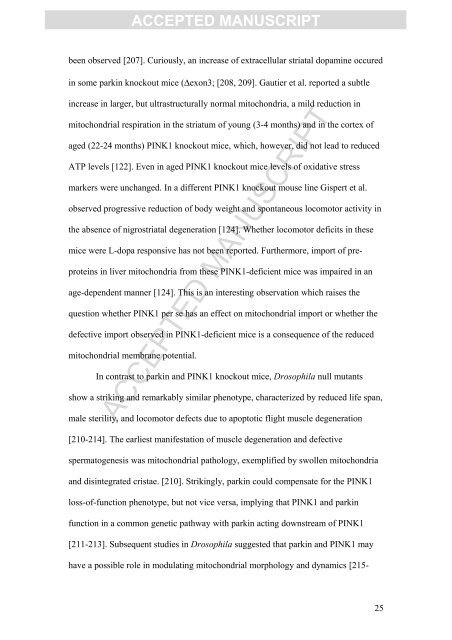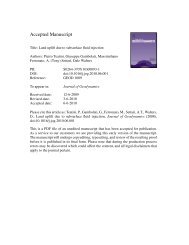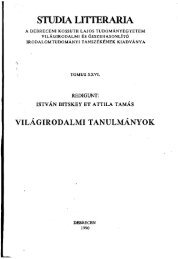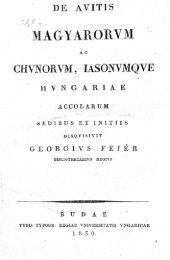accepted manuscript
accepted manuscript
accepted manuscript
Create successful ePaper yourself
Turn your PDF publications into a flip-book with our unique Google optimized e-Paper software.
ACCEPTED MANUSCRIPT<br />
been observed [207]. Curiously, an increase of extracellular striatal dopamine occured<br />
in some parkin knockout mice (Δexon3; [208, 209]. Gautier et al. reported a subtle<br />
increase in larger, but ultrastructurally normal mitochondria, a mild reduction in<br />
mitochondrial respiration in the striatum of young (3-4 months) and in the cortex of<br />
aged (22-24 months) PINK1 knockout mice, which, however, did not lead to reduced<br />
ATP levels [122]. Even in aged PINK1 knockout mice levels of oxidative stress<br />
markers were unchanged. In a different PINK1 knockout mouse line Gispert et al.<br />
observed progressive reduction of body weight and spontaneous locomotor activity in<br />
the absence of nigrostriatal degeneration [124]. Whether locomotor deficits in these<br />
mice were L-dopa responsive has not been reported. Furthermore, import of pre-<br />
proteins in liver mitochondria from these PINK1-deficient mice was impaired in an<br />
age-dependent manner [124]. This is an interesting observation which raises the<br />
question whether PINK1 per se has an effect on mitochondrial import or whether the<br />
defective import observed in PINK1-deficient mice is a consequence of the reduced<br />
mitochondrial membrane potential.<br />
In contrast to parkin and PINK1 knockout mice, Drosophila null mutants<br />
show a striking and remarkably similar phenotype, characterized by reduced life span,<br />
ACCEPTED MANUSCRIPT<br />
male sterility, and locomotor defects due to apoptotic flight muscle degeneration<br />
[210-214]. The earliest manifestation of muscle degeneration and defective<br />
spermatogenesis was mitochondrial pathology, exemplified by swollen mitochondria<br />
and disintegrated cristae. [210]. Strikingly, parkin could compensate for the PINK1<br />
loss-of-function phenotype, but not vice versa, implying that PINK1 and parkin<br />
function in a common genetic pathway with parkin acting downstream of PINK1<br />
[211-213]. Subsequent studies in Drosophila suggested that parkin and PINK1 may<br />
have a possible role in modulating mitochondrial morphology and dynamics [215-<br />
25
















